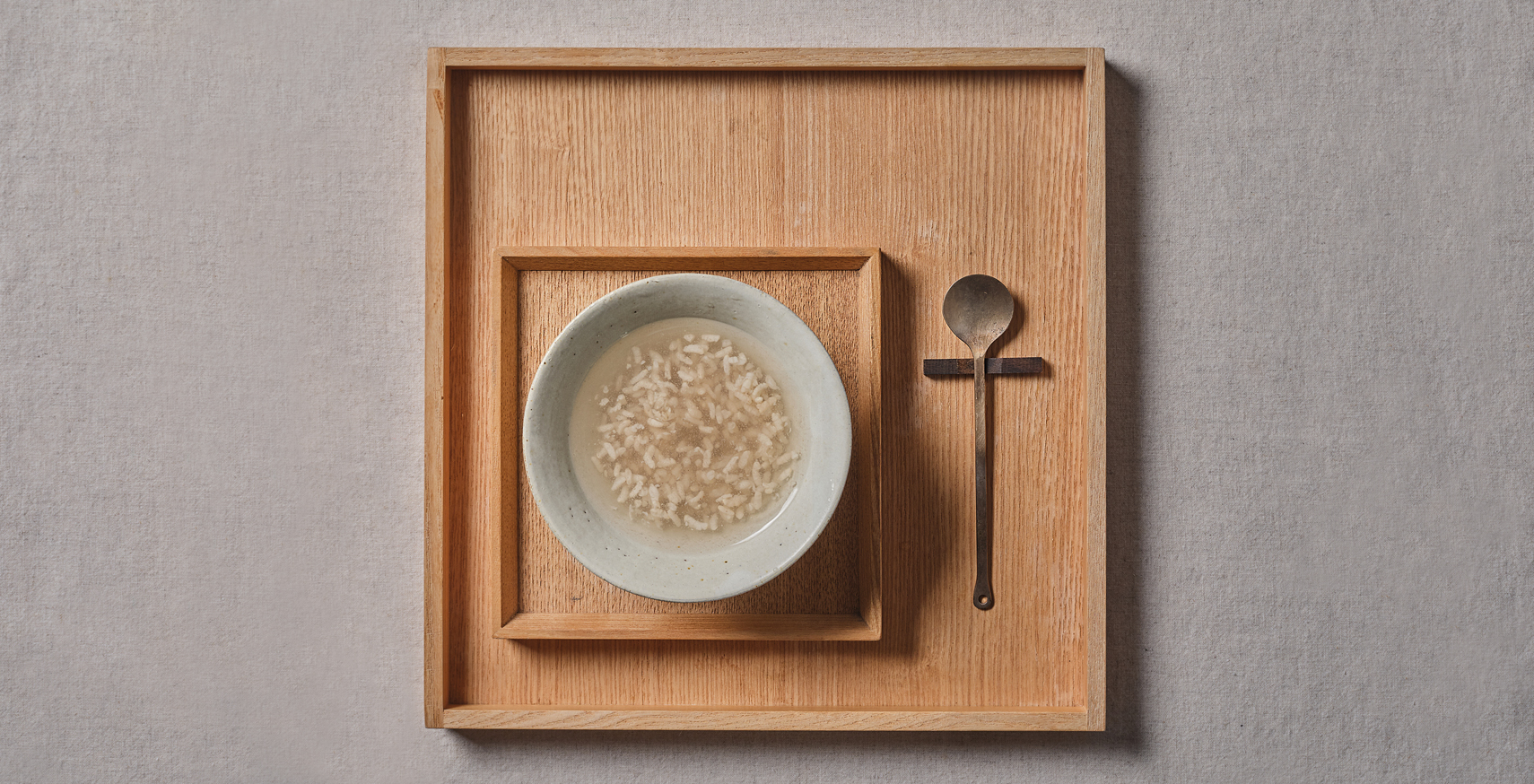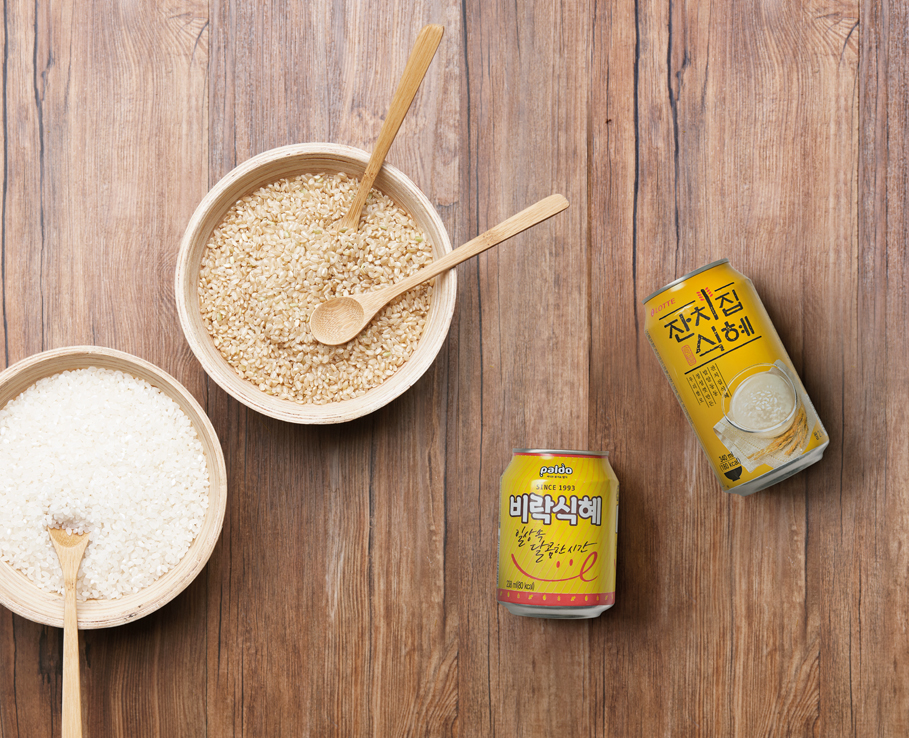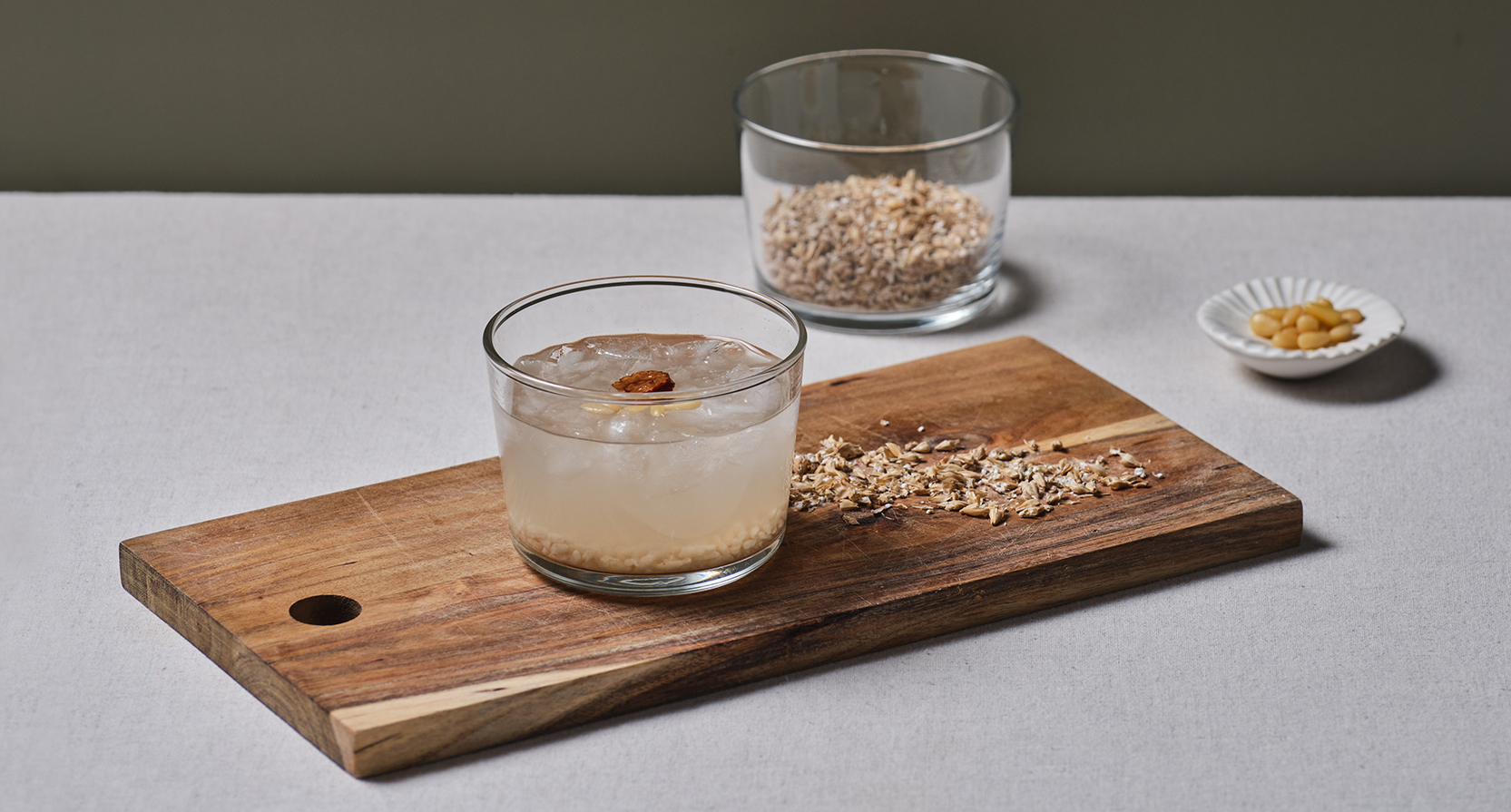January 2021

January 2021
Rice is indisputably the most important food in much of Asia, especially Korea. Historians say rice became the national staple on the Korean Peninsula around 1,500 B.C. and modern times have since its use in a variety of foods like cakes and drinks. One of the most popular drinks using rice as a key ingredient is sikhye, a sweet dessert beverage that is also known to have health benefits.
Written by
Tim Alper,
contributing writer
Photographed by
Studio Kenn

Anyone who has visited a Korean family knows that Koreans are always steaming, washing or soaking rice if not eating it.
In modern homes, rice is prepared in electric rice cookers, which can also be used to make sikhye if you know how. But in the past, huge metal pots of steaming or simmering rice could be found in every house, and the fires used to stoke them would be repurposed to heat the floors of the entire domicile.
To ensure the consummate and the most traditional version of this treat, sikhye should be stored outdoors in onggi (large clay jars). In wintertime, the sikhye in these jars partially freeze often to the consistency of a partially defrosted American-style slushy.
A popular brand of sikhye is marketed as a “nostalgia” beverage, an allusion to how almost every Korean you meet will pine wistfully about sikhye the moment you mention the drink. Korean children have at least one grandparent who lovingly prepared sikhye for the family, often as an after-dinner dessert for a big family occasion such as a wedding or Seollal (Lunar New Year).
 Commercially made sikhye is now widely available in supermarkets or small stores that specialize in tteok (rice cake).
Commercially made sikhye is now widely available in supermarkets or small stores that specialize in tteok (rice cake).
 Though heat is needed to create this preparation, sikhye is never consumed warm. Instead, it is cooled or refrigerated. © shutterstock
Though heat is needed to create this preparation, sikhye is never consumed warm. Instead, it is cooled or refrigerated. © shutterstock
As a longtime resident of Korea, I have my own fond sikhye memories. The first time I tried this drink was at a jjimjilbang (Korean sauna), which unfailingly has people slurping on huge tubs of icecold sikhye while they build up a sweat, along with delectable hard-boiled eggs.
When the coronavirus pandemic comes to an end, I look forward to returning to the bathhouse, and like many others, plan to treat myself to an extra-large serving of sikhye. Another enduring sikhye memory of mine was when I was a food reporter for a magazine. At a restaurant in Andong, Gyeongsangnam-do Province, I was served a sikhye unlike any other, a spicy version made with red pepper flakes and containing a firm and crunchy white radish and carrot.
As a Seoul resident, I was expecting a sweet flavor when told this was sikhye. Instead, I was pleasantly surprised to discover a much more savory preparation, an ideal accompaniment to the main meal.

I later found out that Andong sikhye is a different creature in many ways. Though also made with rice, it is left to ferment naturally rather than rushed through the process using the boiling method.
Andong residents consider the dish a powerful remedy for upset stomachs, and this is no mere folklore. Sikhye, especially the type enjoyed in this city but also the most common variety, is high in probiotic bacteria.
Yet Andong’s take is not the only variation of the more traditional kinds of sikhye, which is typically translucent with slightly brown or milky white hues.
Another popular version is hobak-sikhye made with danhobak, a winter squash with a distinctive green skin or the kind of pumpkin used to carve a Jack O’Lantern during Halloween. This yellow-orange preparation is often sweetened with sugar or given a spicy kick by adding ginger.
Sikhye recipes require two basic ingredients:
malted grain (usually barley) water and
of course, rice.
 To make sikhye, the steamed rice must sit in hot (not boiling) water where it brews before it is eventually boiled, releasing the natural sweetness from its carbohydrate-rich ingredients. This process ferments the rice, causing enzymes to convert the starch into sugar.
To make sikhye, the steamed rice must sit in hot (not boiling) water where it brews before it is eventually boiled, releasing the natural sweetness from its carbohydrate-rich ingredients. This process ferments the rice, causing enzymes to convert the starch into sugar.
To make sikhye, the steamed rice must sit in hot (not boiling) water where it brews before it is eventually boiled, releasing the natural sweetness from its carbohydrate-rich ingredients. This process ferments the rice, causing enzymes to convert the starch into sugar.
At modern weddings, sikhye is often served in large punch bowls, sometimes flavored with honey and garnished with pine nuts allowed to float on the surface. But sikhye is no longer the only sweet drink in town. 21st-century Korea has all sorts of soft drinks and sweetened beverages, whether of the well-being sort or for the sweet tooth, ranging from American-style sodas to smoothies and frappuccinos of the latest flavor trend.
Regardless, sikhye will forever retain its allure for Koreans as it outshines numerous other drinks in so many ways. Rice water has been used by generations of Asians to soothe digestive ails, and unlike many fruit-based drinks that can be acidic or fattening sodas, sikhye is easy for all-comers to enjoy.
As anyone who tries it in Korea will discover, sikhye has the power to draw you in. This is true if you’re lucky enough to try it in its half-frozen state, preferably after a hearty meal and in excellent company.